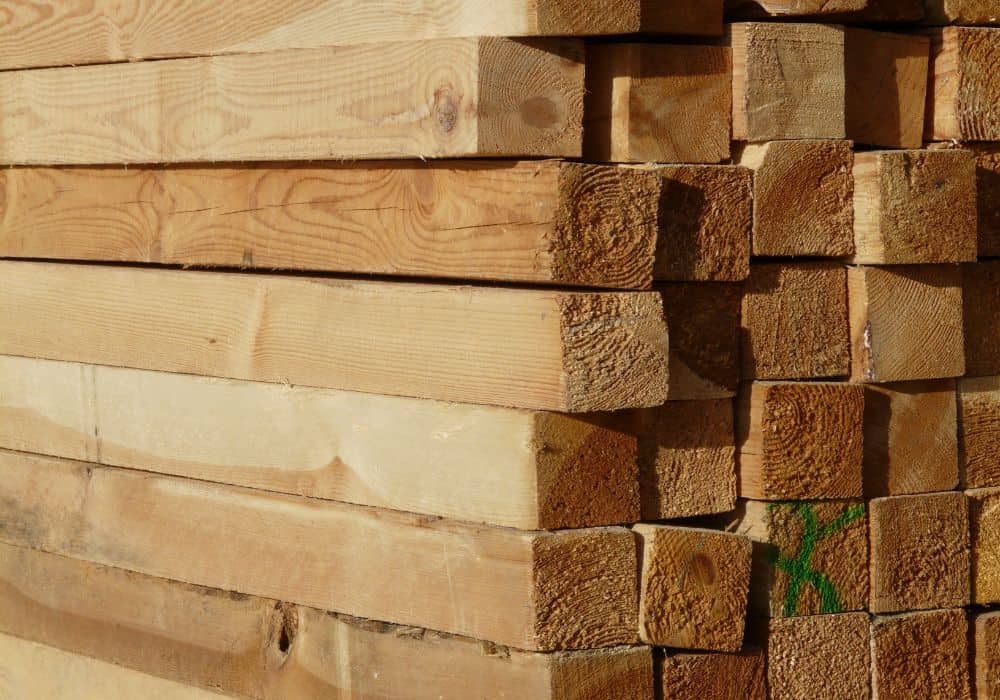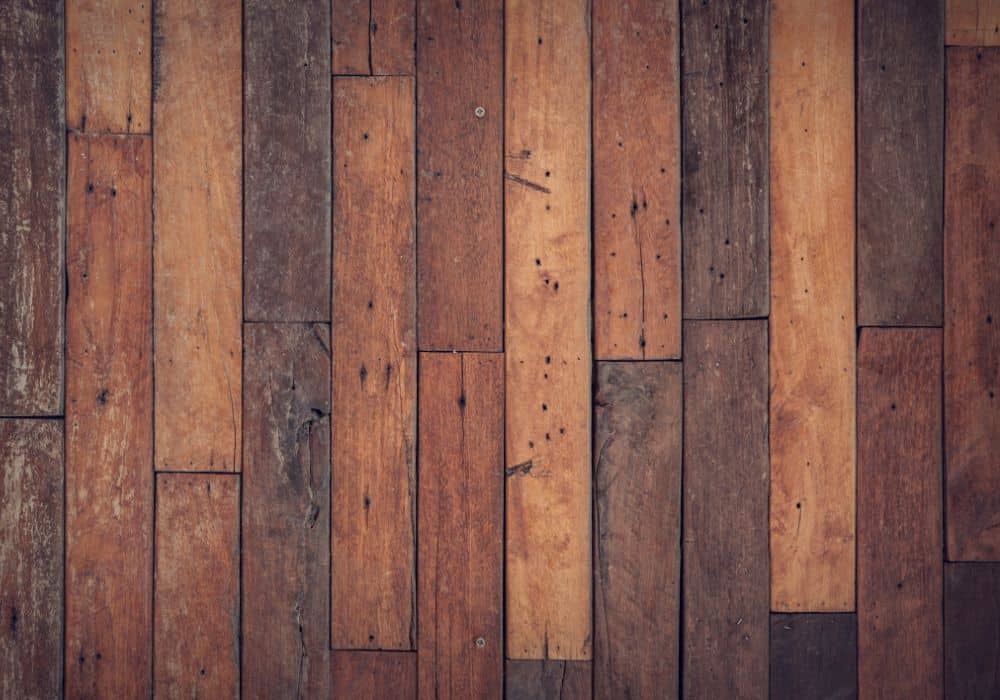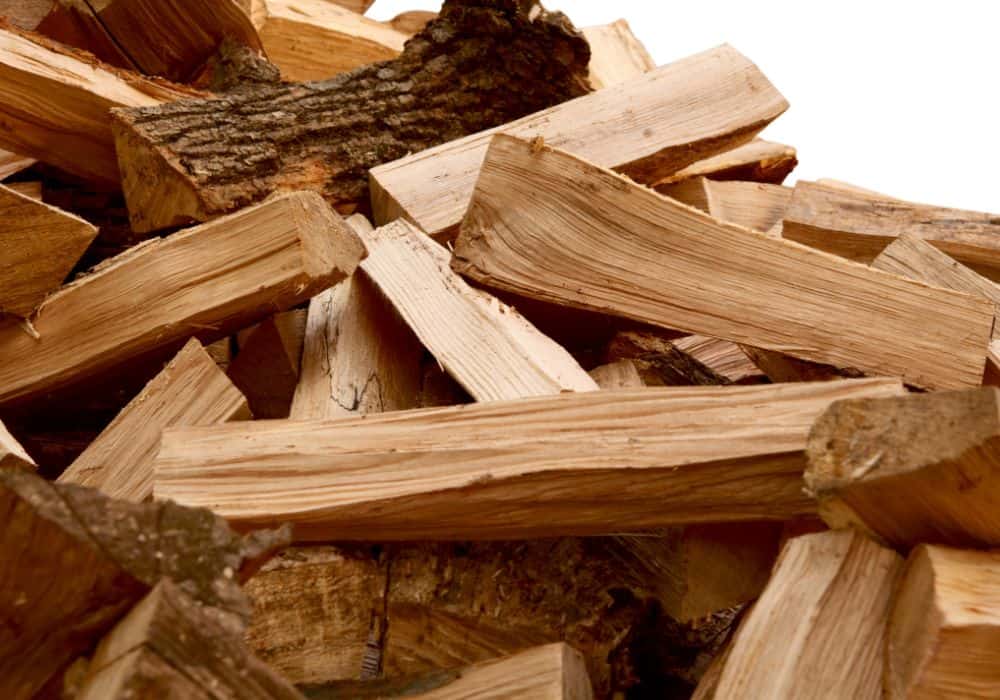Setting out to build something out of wood can be overwhelming, especially if you do not know anything about wood. It does not matter whether you are doing it yourself or a contractor has the job; you will still need to select the best type of wood for the job.
So, how can you tell different wood types? Is there a trick to knowing them by sight or does it involve more expertise? To the eyes of an expert, different wood types exhibit specific characteristics that make them unique. But to your eyes, they all look almost the same.
This article explains types and wood and how to identify them using different methods. You will also know why you need to identify them if you do not need them for construction.
Table of Contents
What Are the Main Types of Wood?
Every tree falls under a specific category or type. There are three types of wood that will help you with their identification:
- Hardwood
- Softwood
- Tropical wood
A typical hardwood is extracted from deciduous trees. Its grain is durable and dense, making it quickly identifiable if you place it side-by-side with other wood types. Coniferous trees make softwood, and you can tell a wood is in the softwood category if it has a flexible and a less-dense grain than hardwood.
Tropical wood is in a class of its own. It typically comes from the tropics and can be softwood or hardwood. The type of tree will tell you whether it is from the tropical region before determining if the lumber is hardwood or softwood.
Specific Characteristics of Different Wood Types
Here, you will see specific wood types and the characteristics that make them unique from others. You can pick a few of them as a way to tell the types of wood by examining them.
- Hardwood is typically dark and has a rich color, sometimes reddish-brown. It is also characterized by a uniform and tight grain pattern. Additionally, hardwood is dense and hard. Examples include oak, cherry, birch, and maple.
- Softwood is almost the opposite of hardwood. In some cases, its attributes are directly opposite those of hardwood. It is typically light and loosely patterned. In addition, it is not as dense or hard as hardwood. Examples include spruce, cedar, and pine.
- Tropical wood (such as teak, mahogany, and ipe) comprises different types, including hardwood and softwood. You can only identify them if you know the specific characteristics of some tropical trees. The timber from these trees typically has different textures, colors, and patterns. You will also notice they are strikingly different from other wood types. Examples include mahogany and teak.
Identification Methods of Wood Types
You can employ a few methods or tricks to tell the type of wood you have. Training can help you tell simply by looking at the wood. But if that is not an option, physical characteristics separate one wood type from another. Alternatively, compare different wood samples.
1. Visual Identification
Did you know different wood types have unique colors, textures, and grain? They also have unique knots, growth rings, and grain patterns. Simply looking at hardwood and softwood will show you a marked difference.
For example, maple, which is hardwood, has a tight grain. But spruce, which is softwood, has a more flexible, loose grain pattern. The features you can observe with your eyes are clear, so this is one way to tell wood types.
2. Physical Identification
Another way to identify different types of wood is to test their physical characteristics. There are several physical attributes you will find on wood, apart from what you see with your eyes, such as how well it works, hardness, and density.
Softwood is easier to work with than hardwood. So, wood from an oak tree is typically harder and denser than wood from a pine tree. The former is hardwood, while the latter is softwood. However, you will need some tools to check some of these characteristics.
You cannot tell how hard or dense by looking at it. So, some tools can help you with identification. For example, a grain analysis tool can help you check a wood’s grain pattern. A harness tester can check the hardness rating of wood on the Janka scale.
3. Wood Sample Comparison
Apart from the physical and visual characteristics that can help you identify wood types, different samples of wood are also helpful in determining the type of wood you have. To do this, you must use known samples. Otherwise, they may all look the same to you.
You can look for wood samples with labels and use them to make a comparison. Another option to know what these wood samples are is to find a wood expert or use an identification guide. With a known wood sample, you can easily tell what wood type you want.
What Tools Can You Use to Identify Wood?
As mentioned, a grain pattern analysis tool and a hardness tester are a few of the tools for identifying wood. You can also use a magnifying glass as part of the tools to use. Let’s explain each tool in detail.
1. Grain Pattern Analysis Tool
This is a specially designed tool that you can use to check the grain pattern on any wood sample. Because each type of wood has a unique grain pattern, you can determine whether it is hardwood or softwood by examining this pattern.
This is true even if you are unsure of the hardness rating, or simply by looking at it. Not everyone can own this tool, so it may not be the ideal option if you are not in the timber business.
2. Hardness Tester
A hardness tester tool measures the hardness of wood. It comes in handy when you tell what wood you are handling by its grain pattern or color. The Janka scale gives you the hardness rating for wood types.
The scale measures wood hardness by checking the force it takes to push half a specific type of steel ball up to half its diameter into the wood. Like the grain analysis tool, this one is not your everyday tool. Unless you have a specific and regular use for it, you may want to use other methods to identify the wood.
3. Magnifying Glass
If you can identify wood by looking at it, a magnifying glass may come in handy. You can see tiny details in larger form, so grain patterns that are unseen to the naked eye become clearer to you. This tool is available for everyone to use, so it may be your best bet in identifying wood.
We would like to point out that these methods are dependable but not enough to tell wood types down to the species level. If all you are looking for is whether a wood sample is hardwood or softwood, these methods will work.
But if you have treated or stained wood, it will be almost impossible to tell. In a case where there is wood stain or treatment, you will need special methods.
Reasons for Identifying Different Wood Types
There are different reasons for wanting to tell the types of wood, and it is not only for construction purposes. The following are a few of them:
1. Usage
Every wood type has a specific purpose that suits it. Softwood works best for carpentry and cabinetry jobs because it is malleable. Hardwood, on the other hand, works best for wood floors because it is strong and holds up well under stress. Therefore, you must determine what you need the wood for before selecting a type.
2. Resistance
Different wood types respond differently to moisture and insects. You will find that wood from the cypress and cedar trees is naturally weather-resistant.
So, they are excellent for use if you need to construct something outdoors. When you know the wood types, you can determine what use to put it to based on its resistance to moisture, rot, and insect infestation.
3. Cost
Your budget is another important aspect of choosing wood. It is crucial to note that wood types differ in price. While some are readily available, making them less expensive, others are not easy to come by, making them pricier.
Therefore, the rarer and more exotic the wood type, the more expensive it will be. Depending on what you need the wood for, check the price and see if it fits your budget. You may have to make some adjustments to fit what you currently have.
4. Specific Laws
There may be some regulations guiding the use of timber from specific tree types. So, you must determine whether the wood you want to use does not fall under the protected species category. Otherwise, you will need another option.
Conclusion
When looking for specific wood types, it can be frustrating to find ways of wood identification. There are various options, and vendors will try to convince you to buy from them.
However, you must know what you need the wood for because that will help you make an informed decision. Fortunately, several attributes and properties can help you identify wood types. So, you will find specific methods of identification and other ways to tell the different types of wood in this article.


